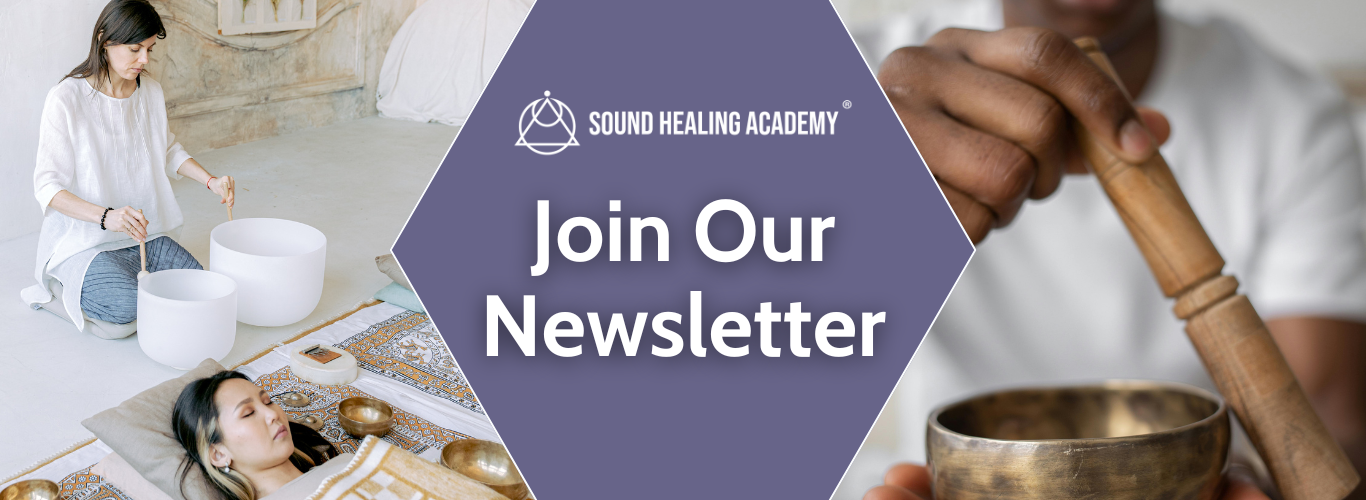Sound Therapy For Sleep: Improving Sleep Quality Naturally
Jan 17, 2024
A good night's sleep can often feel elusive in the hustle and bustle of our modern lives. Many wrestle with monkey minds and restless bodies, seeking refuge in dreams. Amidst many approaches to enhance sleep quality, one increasingly popular and non-invasive method is sound therapy!
In this blog, we explore why sound therapy for sleep is one of the best therapeutic practices that can create an environment conducive to relaxation and restfulness.
Why Is Sleep So Important?
Sleep is essential for human survival and functioning!
The WHO (World Health Organisation) claims that 2 thirds of the population sleep less than the recommended 7-8 hours per night (also recommended by the American Academy of Sleep Medicine).
Getting good quality sleep is just as important as the quantity of sleep and there are many health and well-being benefits to a decent and restorative sleep.
Here are our top 5 benefits of having a great night sleep!
- Promotes general wellbeing and quality of life
- Boosts immunity, which improves overall health and well-being
- Promotes positive mental health
- Improves the mood
- Promotes emotional resilience
Understanding The Basics Of Sound Therapy For Sleep
Sound healing therapy, also known as sound healing, traces its roots back to ancient civilizations that recognized the profound impact of sound on the human mind, body and soul. In contemporary settings, sound therapy for sleep has emerged as a holistic and accessible approach to address insomnia, stress, and other sleep-related issues.
One of the many benefits of sound healing is the potential to improve sleep quality by reducing stress and providing conditions conducive to restful and restorative sleep. It is widely evidenced that sound healing can promote the relaxation response by reducing anxiety levels.
Study Findings

In one study involving medically ventilated patients, results showed a reduction in markers of anxiety when soothing music was played in the ICU. The small-scale study evidenced a decrease in pulse rate, respiratory rate, metabolic rate, oxygen consumption, and improvements in blood pressure.
Another study reported that immersive sound therapy may be an innovative approach to reduce the individual risk of developing neurodegenerative diseases, such as Alzheimer’s Disease, by inducing electroencephalographic (EEG) slow-wave delta oscillations (which characterize deep sleep), thereby promoting glymphatic clearance.
Although a small pilot study, some encouraging results were found when using two vibrational frequencies concurrently to induce sleep. This was created using a whole-body vibrational bed to provide low-frequency, high-amplitude waves consistent with delta brain waves. These are typical during deeper stages of sleep.
Also, simply bringing awareness to the breath, extending the exhalation and introducing humming can significantly impact the nervous system, triggering a relaxation response. The production of nitric oxide (NO) can be increased 15-fold by introducing humming, which has a positive effect on the cardiovascular system and moves the nervous system into parasympathetic dominance, associated with relaxation, rest and thereby improving quality of sleep.
Another study which compared singing versus speaking to infants in distress found that singing was much more effective in calming the infants and inducing sleep.
Also, it is claimed that 2 Hz and lower frequencies are best to induce sleep. However, we have thousands of case studies and testimonials from SHA students, graduates and associates, affirming that our unique integral sound healing approach leads to improved quality and quantity of sleep.
Smartwatches and other devices can help us track and monitor our sleep patterns, so it’s always wonderful to hear that after a sound bath or treatment, clients have evidence of their improved sleep. A frequent sound bath attendee with one of our Sound Healing Academy Associate Teachers said, “I had an amazing sleep and amazing dreams! It has made me feel more positive about the future!”
Sarah, another sound bath attendee captured her sleep following a sound bath and reported only 23 minutes of being awake, compared with her usual reading of around 3 hours of laying awake in bed. Deep sleep was increased from an average of 16 minutes to 40 minutes. Sarah reported feeling “more refreshed than usual on the following morning” after a sound bath with a qualified SHA practitioner.
Our Favorite Healing Sounds Before Sleep

Nature Sounds
Gentle rustling leaves, babbling brooks, and ocean waves create a soothing auditory backdrop that mimics the natural world. These sounds evoke a sense of tranquility, transporting the listener to serene environments conducive to sleep.
White Noise
White noise is a consistent, steady sound that covers a broad spectrum of frequencies. It helps drown out disruptive or sudden noises, creating a consistent sonic environment that can promote relaxation and mask disturbances.
Binaural Beats
Binaural beats create an auditory illusion that influences brainwave patterns by playing slightly different frequencies in each ear. This technique promotes relaxation, reduces anxiety, and enhances sleep quality.
Instrumental Music
Melodic and calming instrumental music, particularly those with slow tempos, can be a powerful tool for inducing relaxation. Traditional instruments like flutes, pianos, and soft strings are often incorporated into sleep-inducing playlists.
Guided Meditations
Combining calming narration with tranquil sounds, guided meditations lead individuals through a relaxation process, releasing tension and stress. This approach helps quiet the mind and prepare it for restful sleep.
Practical Applications & Accessibility Of Sound Therapy For Sleep
One of the most significant advantages of sound therapy is its accessibility.
With the rise of smartphone apps, streaming services, and dedicated devices, individuals can easily incorporate sound therapy into their bedtime routines. Whether through dedicated sleep apps, ambient playlists, or purpose-built sound machines, the options are diverse and tailored to individual preferences!
Final Thoughts
Sound therapy offers a harmonious solution to achieving restful sleep in a world filled with noise and distractions.
By leveraging the inherent power of sound, this therapeutic practice taps into the primal connection between humans and the calming rhythms of the natural world. As we seek holistic approaches to well-being, sound therapy emerges as a gentle yet potent ally in seeking a peaceful night's sleep.
So, tune in, let go, and allow the symphony of sound to serenade you into a refreshing slumber!
What To Read Next:
- How To Connect With The Healing Powers Of Earth Frequency
- Discover The Healing Power Of Sound - With Lesley Turski
- The Healing Benefits of Sound Baths - With Jen Vu
- Embracing Healing Sounds In Our Daily Life - With Eric Lindstrom
References
Brown R.E, Basheer R, McKenna J.T, Strecker R.E, McCarley R.W (2012) "Control of sleep and wakefulness", Physiol. Rev., vol. 92, no. 3, pp. 1087-1187.
Byass P. (2008) Towards a global agenda on ageing. Glob Health Action. 2008;1 10.3402/gha.v1i0.1908.
Chlan L. (2000) Music therapy as a nursing intervention for patients supported by mechanical ventilation. AACN Clinical Issues Advanced Practice in Acute Critical Care, 11(1), 128–138.
Corbeil et al. (2015) Singing Delays the Onset of Infant Distress. Infancy. 21. 10.1111/infa.12114.
Fort K (2021) Effect of short-term practice of Bhramari pranayama on sleep quality and perceived stress in school students Int J Physiol. 9:1.
Freud S (1900) The Interpretation of dreams, from the standard edition of the complete psychological works of Sigmund Freud, translated by James Strachey.
Gottlieb D.J, Somers V.K, Punjabi N.M, Winkelman J.W (2017) Restless legs syndrome and cardiovascular disease: a research roadmap [published online October 27, 2016] Sleep Med. 31:10–17.
Grandner M, Mullington J.M, Hashmi S.D, et al. (2018) Sleep duration and hypertension: Analysis of > 700,000 adults by age and sex. J Clin Sleep Med. 14(6):1031–1039.
Hossain J.L, Shapiro CM (2002) The prevalence, cost implications, and management of sleep disorders: an overview. Sleep Breath, 6:85–102.
Jain S, McKusick E, Ciccone L, Sprengel M, Ritenbaugh C (2023) Sound healing reduces generalized anxiety during the pandemic: A feasibility study, Complementary Therapies in Medicine, Volume 74, 102947.
Kimura H, Kuramoto A, Inui Y, Inou N (2017) "Mechanical bed for investigating sleep-inducing vibration", J. Healthcare Eng., vol. 2017, pp. 1-9.
Kuppusamy M, Kamaldeen D, Pitani R, Amaldas J, Shanmugam P (2018) Effects of Bhramari pranayama on health – A systematic review J Tradit Complement Med. 8:11–6.
Lyall L.M, Wyse C.A, Graham N, et al. (2018) Association of disrupted circadian rhythmicity with mood disorders, subjective wellbeing, and cognitive function: a cross-sectional study of 91 105 participants from the UK Biobank. Lancet Psychiatry. 5(6):507–514.
Lyon L. (2019) Is an epidemic of sleeplessness increasing the incidence of Alzheimer's disease? Brain, 142:e30.
Palagini L, Hertenstein E, Riemann D, Nissen C. (2022) Sleep, insomnia and mental health J Sleep Res.31:e13628.
Renberg (2017) “Where dreams may come: incubation sanctuaries in the Greco-Roman World’ Gil. H Renberg (vol.1).
Reutrakul S, Van Cauter E (2018) Sleep influences on obesity, insulin resistance, and risk of type 2 diabetes. Metabolism. 2018;84:56–86.
Saoji A.A, Raghavendra B.R, Manjunath N.K (2019) Effects of yogic breath regulation: A narrative review of scientific evidence J Ayurveda Integr Med. 10:50–8.
Stranges S, Tigbe W, Gómez-Olivé F.X, Thorogood M, Kandala N.B (2012) Sleep problems: an emerging global epidemic? Findings from the INDEPTH WHO-SAGE study among more than 40,000 older adults from 8 countries across Africa and Asia. SLEEP. 35(8):1173–1181.
Swick L.J (2014) ‘Dreaming the sacred art: incubating navigating and interpreting sacred dreams for spiritual and personal growth’ Skylight Paths Publishing.
Watson N.F, Buchwald D, Delrow J.J, et al. (2017) Transcriptional signatures of sleep duration discordance in monozygotic twins. Sleep. 40(1)
Worley S.L (2018) The Extraordinary Importance of Sleep: The Detrimental Effects of Inadequate Sleep on Health and Public Safety Drive an Explosion of Sleep Research. P T. 43(12):758-763.
Wostyn P, Goddaer P (2022) Can meditation-based approaches improve the cleansing power of the glymphatic system? Explor. Neuroprot. Ther. 2, 110–117.
Would You Like To Introduce Sound Healing Into Your Practice?
Join one of our Online Sound Healing Courses or In-Person Training Courses!
Lorem ipsum dolor sit amet, consectetur adipiscing elit. Cras sed sapien quam. Sed dapibus est id enim facilisis, at posuere turpis adipiscing. Quisque sit amet dui dui.
Join Our Sound Healing Newsletter
Be the first to hear about upcoming events, workshops, and exclusive offers on instruments and training.
Unlock a world of free resources, inspiring sound healing courses, and more!
SPAM is a NO-NO! We will never sell your information, for any reason.







